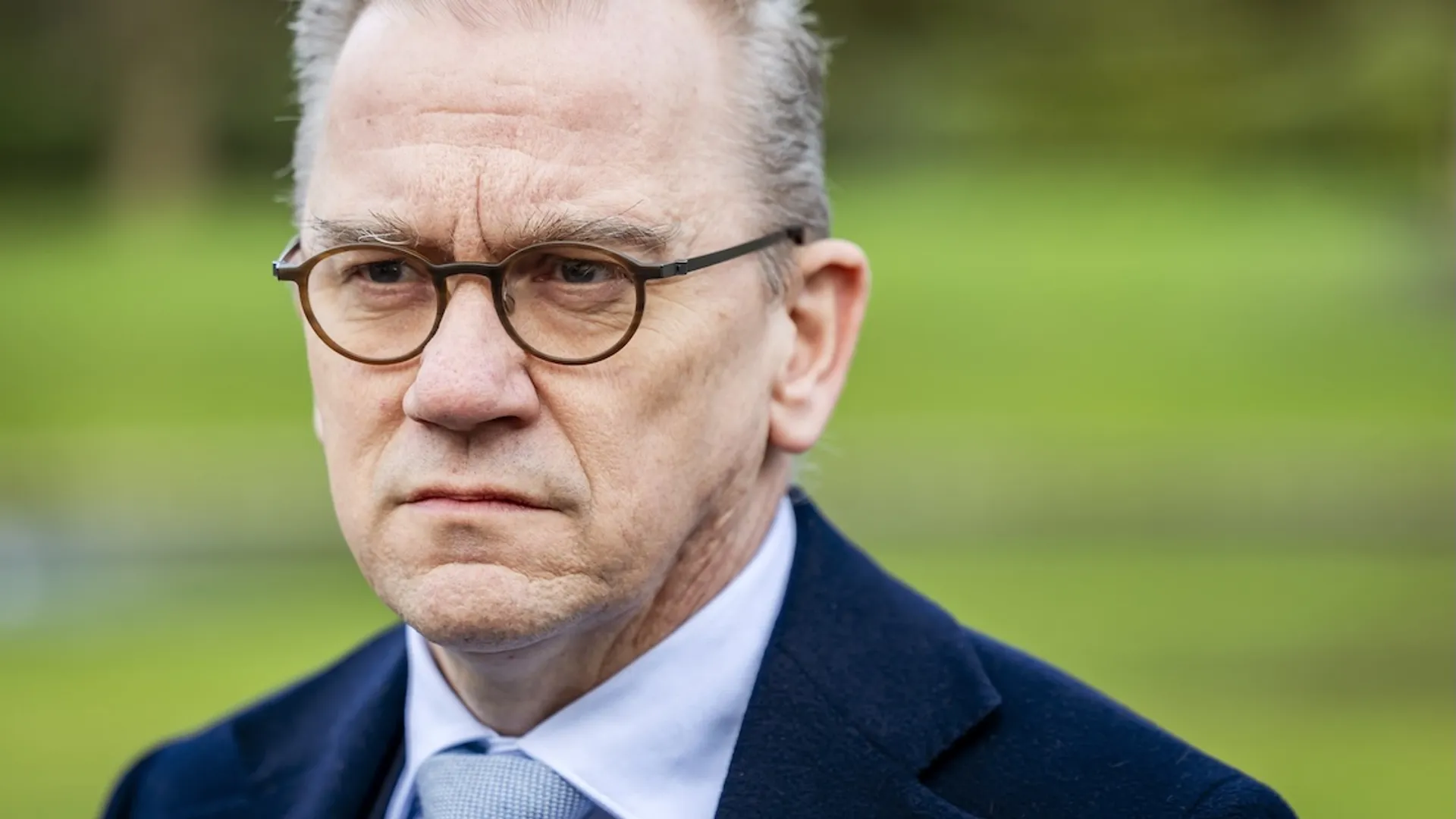Dutch Public Broadcasting Under Fire: A Century-Long Battle for Control
Table of Contents
- 1. Dutch Public Broadcasting Under Fire: A Century-Long Battle for Control
- 2. A Contentious History: From Confessional Roots to Modern-Day Battles
- 3. De Telegraaf: A Persistent Critic
- 4. The 21st Century: Renewed Attacks and political Maneuvering
- 5. The Core of the Conflict
- 6. Implications for the Future
- 7. Potential Consequences
- 8. A Call to Action
- 9. What are the greatest threats to the independence of Dutch public broadcasting according to Professor Els van Der Meer?
- 10. Dutch Public Broadcasting Under Fire: A Conversation wiht Professor Els Van Der Meer
- 11. Interview: The future of Dutch public Broadcasting
- 12. Current Challenges and Proposed Reforms
- 13. Looking Ahead: The Future of Dutch Media
The Netherlands’ public broadcasting system, a cornerstone of Dutch culture and democracy, faces renewed threats as right-wing political forces seek to reshape its structure and funding. This article delves into the historical context of this ongoing struggle,examining the key players,their motivations,and the potential consequences for the future of Dutch media.
Published: Yesterday
Reading time: 8 minutes
A Contentious History: From Confessional Roots to Modern-Day Battles
The roots of the Dutch public broadcasting system stretch back to 1930, a time when a confessional government divided airtime among various broadcasting associations. This foundational decision, while intended to represent the diverse segments of Dutch society, has been a source of friction and contention for nearly a century.
Early tensions arose with the algemeene Vereeniging Radio Omroep (AVRO), led by Willem Vogt. Vogt, in collaboration with De Telegraaf, a major Dutch newspaper, believed that AVRO should be the primary voice of the Dutch people. This ambition clashed with the emergence of other philosophical broadcasters, including the Calvinistic NCRV, the Catholic KRO, and the Social Democratic VARA.
The government’s decision to grant broadcasting time based on ideological affiliation and to restrict program data publication in newspapers further fueled the conflict. AVRO’s protests, including mass demonstrations, where unsuccessful, highlighting the deep-seated divisions over the control and direction of public broadcasting.
During the Nazi occupation, the broadcasting landscape was forcibly reshaped with the establishment of a National Socialist Dutch Omroep. After liberation, attempts to create a BBC-style system were thwarted, and the pre-war broadcasting associations regained their positions.
De Telegraaf: A Persistent Critic
De Telegraaf has consistently challenged the public broadcaster’s dominance, advocating for commercial alternatives. When commercial radio and television emerged, thay found support in the newspaper, which critically covered the public broadcasters and their programs.
Leo Riemens, a TV reviewer for De Telegraaf, frequently criticized what he perceived as the authority-undermining and immoral content of public broadcasting, arguing that it failed to provide the “hard-working Dutch people the entertainment to which they were entitled.”
The rise of sea-based commercial broadcasters forced the government to reform the broadcasting system. The new Omroepwet tied broadcasting time to membership numbers, allowing new broadcasters to join if they met membership thresholds.The NOS, a non-aligned association, was created to focus on reporting and cultural programs. at the same time, offshore broadcasting was outlawed.
The TROS, founded by program makers from the REM TV channel, quickly became the largest broadcasting association, promising entertainment over intellectual content.De Telegraaf supported the TROS, receiving the lucrative contract for the TROS compass in return.
The newspaper continued its attacks, accusing the public broadcaster of wasting money and promoting left-wing ideologies. The “Holle Bolle NOS” campaign exemplified this criticism, targeting perceived waste and favoritism within the NOS.
Despite these challenges, the public broadcaster survived, protected by confessional parties and the PvdA until commercial broadcasters were finally allowed in 1989, driven by EU agreements.
The 21st Century: Renewed Attacks and political Maneuvering
In the 21st century, criticisms of the public broadcaster have intensified, focusing on its perceived left-wing bias and outdated membership system. Populist parties, like that of Geert Wilders, have openly expressed their desire to dismantle the system entirely. During the Rutte I coalition, the Wereldomroep, which focused on a global audience, was eliminated as a concession to Wilders.
De Telegraaf has maintained its dual approach, critiquing the public broadcaster while also forging business relationships with select broadcasters. Editors from the newspaper founded the public broadcasters Powned and WNL, with the explicit goal of presenting a right-wing perspective.
Under Rutte II, state Secretary Sander Dekker pushed for mergers among existing broadcasters, reducing their autonomy and increasing the power of the NPO and channel coordinators.
Now, Minister of Education Eppo Bruins is proposing further reforms aimed at weakening the link between membership numbers and broadcasting time. This could disproportionately affect broadcasters like WNL, which has a relatively small membership compared to larger organizations like BNNVARA and Omroep MAX.
Bruins envisions a system with four “broadcaster houses,” each representing a distinct philosophical and socio-cultural perspective. These houses would assume the tasks of the NTR, weakening the role of general programming.
The Core of the Conflict
At the heart of the conflict is the unique structure of the Dutch public broadcaster, where programming is largely driven by viewer and listener organizations. This grassroots approach serves as a safeguard against state influence and ensures a diversity of voices.
Critics on the right, though, argue that this system leads to a left-leaning bias and fails to represent the views of all Dutch citizens. They seek to centralize control and reduce the influence of individual broadcasters.
The constant calls for budget cuts and the imposition of discounts further undermine the public broadcaster’s ability to fulfill its mission. The historical shift from dedicated listening and viewing fees to funding from the general tax pool has made the broadcaster vulnerable to political pressure and budget fluctuations.
Implications for the Future
The proposed reforms by Minister Bruins represent a notable threat to the independence and diversity of Dutch public broadcasting. By weakening the link between membership and broadcasting time, the government risks marginalizing smaller broadcasters and consolidating power in the hands of a few dominant players.
The creation of “broadcaster houses” could lead to further polarization, with each house catering to a specific ideological viewpoint. This could undermine the broadcaster’s ability to serve as a unifying force in Dutch society.
The ongoing attacks on the public broadcaster also raise concerns about the future of media pluralism in the Netherlands. A strong and autonomous public broadcaster is essential for ensuring a diversity of voices and perspectives in the media landscape.
Potential Consequences
| Risk | Impact |
|---|---|
| Reduced Diversity | Fewer voices represented, leading to a narrower range of perspectives. |
| Increased Political Influence | Greater government control over content, potentially compromising editorial independence. |
| Erosion of Public Trust | if the public perceives bias, trust in the broadcaster could decline. |
| Marginalization of Smaller Broadcasters | Smaller organizations may struggle to compete, leading to their disappearance. |
| decline in Quality Programming | Budget cuts and restructuring could negatively impact the quality and innovation of programming. |
A Call to Action
The future of Dutch public broadcasting hangs in the balance.It is indeed crucial for citizens to engage in the debate and defend the principles of independence, diversity, and accessibility.
minister Bruins’ proposals are in keeping with a long history of right-wing efforts to undermine the public broadcaster. It is essential to resist these efforts and ensure that the Dutch public broadcaster continues to serve as a vital source of information, culture, and entertainment for all citizens.
What are the greatest threats to the independence of Dutch public broadcasting according to Professor Els van Der Meer?
“`html
Dutch Public Broadcasting Under Fire: A Conversation wiht Professor Els Van Der Meer
We delve into the history and current challenges facing the Dutch public broadcasting system with media expert,Professor Els Van Der Meer.
Interview: The future of Dutch public Broadcasting
Archyde: Professor Van Der Meer, welcome to Archyde. Thank you for joining us to discuss the ongoing debates surrounding Dutch public broadcasting.
Professor Van Der Meer: Thank you for having me.It’s a critical topic, especially now.
Archyde: The article highlights a long history of clashes. Can you briefly outline the core issues driving these conflicts?
Professor Van Der Meer: Certainly. At its heart,it’s a struggle over control. The Dutch system, unique with its member-based broadcasters, constantly faces pressure from those who want more centralized control or a shift toward commercial models.This fundamental tension has played out as the 1930s.
Archyde: The article mentions the influence of De Telegraaf.How has this newspaper shaped the narrative surrounding public broadcasting?
Professor Van Der Meer: De Telegraaf has been a consistent critic,advocating for alternatives to public broadcasting,and often highlighting perceived left-wing biases. They’ve played a significant role,sometimes directly,by supporting commercial ventures and founding their own broadcasters.
Current Challenges and Proposed Reforms
Archyde: We’re seeing renewed attacks in the 21st century. What are the key criticisms leveled against the public broadcaster today?
Professor Van Der Meer: The focus remains on perceived bias and funding. Populist movements, and those on the right, argue the current system doesn’t represent all Dutch citizens. Minister Bruins’ proposed reforms seek to address these concerns, but raise new ones.
Archyde: Minister Bruins aims to loosen the tie between membership and broadcasting time. What are the potential consequences of such a move?
Professor Van Der Meer: The risk is marginalizing smaller broadcasters tied to specific viewpoints and consolidating power. It could lead to a less diverse media landscape and a feeling of exclusion for certain audiences. The creation of “broadcaster houses” instead of general programming may exacerbate these issues.
Looking Ahead: The Future of Dutch Media
Archyde: Considering the ancient context and current pressures, what do you see as the greatest threat to Dutch public broadcasting right now?
Professor Van Der Meer: Without a doubt, the long-term erosion of its independence. funding cuts, political pressure, and changes to its structure all diminish its ability to








